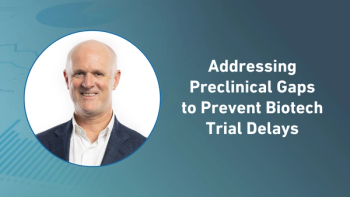
Laying a Groundwork for Success in Phase I Oncology Trials
The numbers of oncology drugs in clinical development is more than twice the number in any other therapeutic area1. In spite of being the most commonly tested therapies, oncology drugs have the worst approval rates. Only 5% of agents with anticancer activity in preclinical development are licensed2. The main challenge for oncology drugs entering clinical development is translating in vitro and preclinical data into a clinical regimen. Although Phase I studies in most therapeutic areas consist of healthy patients, Phase I studies in oncology consist of patients with active disease. This creates unique challenges and potential opportunities. Several strategies, including developing a solid study design, choosing the right study team, and taking advantage of technology, can help position a development program for success.
The Opportunities
Potential for efficacy data. Phase I studies conducted in healthy patients generally are limited to evaluating safety and pharmacokinetics of an investigational therapy. Because Phase I studies in oncology are conducted in patients with disease, they can sometimes be designed to obtain preliminary efficacy data. Explains Jurgen Frisch, MD, chief medical officer of European operations at Clinipace Worldwide, “If you design your trial adequately, it can tell you a lot about the mode of action, the potential efficacy, maybe also the targeting and characteristics of the new compound. You are not investing a lot of money and time in healthy patients. You have the opportunity to learn from the disease itself right in the very beginning.” This can be valuable to determining whether and how a drug should be evaluated in Phase II studies.
Patient interest. In general, oncology patients are very interested in supporting progress in science and medicine. Therefore, patients tend to be compliant with any treatment regimens and evaluations.
The Challenges
Access to patients. Phase I studies in healthy patients have a much larger enrollable population than those in patients with a specific disease state. In oncology studies, accessing patients with appropriate disease characteristics can be very challenging, especially if the target population has advanced disease and therefore a high mortality rate.
Reduced responsiveness to therapy. Oncology trials are bound to enrolling patients with later-stage disease who have already been treated with standard of care. For ethical reasons, early-stage patients must be treated with any approved therapies before they can be treated with investigational ones. “Although late-stage disease is standard entry for drug development, it may not be representative of final population you want to treat,” according to Frisch.
Late-stage disease tends to be less responsive to medications; therefore, response to an investigational therapy may not be substantial enough in late-stage patients to warrant further clinical development. This issue is a particular concern for immunological treatment approaches like tumor vaccines, in which the patient’s immune system defends against the tumor, because in late-stage disease, the immune system is less able to mount a response.
Confounding factors. In studies with healthy patients, concomitant medication intake can be prohibited, and an investigational agent can be evaluated as a sole therapy. In studies with oncology patients, who are taking other medications for their disease, a drug cannot be evaluated as the sole therapy. It is impossible to know what interactions might occur with existing treatment. And it is often difficult to discern whether adverse events are caused by the investigational agent, some other anti-cancer agent being taken as standard of care, or by the disease itself.
Length of time. For many non-oncology indications, such as high blood pressure or diabetes, objective effects of therapy can be seen within days to weeks. For oncology, evaluating meaningful clinical efficacy can take months to years. Tumor responses can sometimes be evaluated after 1 to 3 months, but endpoints like disease-free survival or time to progression can only be evaluated if patients are followed beyond the median time to tumor progression, which can be a year or longer. Including enrollment time, a Phase I oncology trial can take 1.5 to 2 years.
Developing a Solid Study Design
When a treatment is being tested for the first time in humans, it can be challenging to design both the regimen and methods for evaluating it. Getting early feedback from key opinion leaders and principal investigators is often instrumental to creating a workable protocol that yields useful information.
Primary endpoints: safety and dosing. In a Phase I oncology study, the primary endpoint usually relates to finding the maximum tolerated dose of therapy. Because of regulatory and scientific considerations, it is also useful to determine the minimal effective dose of a new agent. Multiple dosing schedules within various cohorts may be needed to determine the optimal dose to move forward with in Phase II studies.
Having cohorts with doses too low to yield useful information should be avoided, and dosing should be started at lowest therapeutic dose possible. Dose escalation procedures should be clearly detailed in the protocol to avoid errors in treatment assignment. If patients are not assigned to correct cohorts and doses, they will be unenrolled from the study, which increases the cost of the trial and is disappointing to patients and study site personnel.
Secondary endpoints. Secondary endpoints can include measures for evaluating effectiveness or narrowing an indication or target population. Because clinically meaningful endpoints such as progression-free survival take a long time to measure, they are never used in Phase I studies. Shorter-term endpoints can include surrogate parameters of efficacy, such as activity of a kinase or amount of drug binding to excised tumor cells. Some diagnostic variables can be used to evaluate drug activity before more obvious clinical effects can be measured. For example, with tumor vaccines, certain immune responses precede later clinical response and can be used as valid surrogate endpoints far before effects on a tumor can be discerned.
Inclusion and exclusion criteria. Enrollment criteria need to be broad enough to guarantee sufficient patient enrollment but not so broad as to introduce confounding characteristics into the data set. Principal investigators are great resources for advising on how to craft inclusion and exclusion criteria to maximize the population of enrollable patients. Box 1 provides a list of important questions to consider in drafting inclusion and exclusion criteria.
For oncology studies, it is important to be clear on how to distinguish whether patients have the targeted disease state. “Investigators and study nurses will need clear criteria on pathology of tumor and disease diagnosis,” suggests Holly Vidrine, senior clinical research associate at Clinipace Worldwide.
Schedule of events. The protocol should include a clear schedule of events and calendar for labs, tests, and scans. “Make clear how much blood needs to be taken and when,” suggests Vidrine. “Specify what happens if you can’t get blood or it’s taken outside of a specified window.” Having clearly described schedules and procedures helps avoid study site confusion on the timing or process of collecting pharmacokinetic and other laboratory samples.
Choosing the Right Study Team
Most Phase I oncology studies have only two to three study sites. Keeping the number of study sites to a minimum helps reduce start-up costs and increases long-term efficiency.
In the US and Europe, many oncology studies are done in large universities or independent commercial Phase I units. Both have access to patients and have staffing to handle the types of collections needed Phase I studies, such as 12-hour pharmacokinetic samples. An advantage of university sites is that they have key opinion leaders, but start-up can take a long time and overhead costs are often high.
In oncology, “the earlier your development stage is, the more important it is to have experienced investigators and sites,” according to Frisch. Because Phase I oncology studies comprise previously untested therapies in a complex patient population, finding study sites and service providers with experience in this context is vital to ensure patient safety and proper collection of data.
Study Sites. Ideally, investigators and site personnel should be familiar with the challenges and requirements of oncology clinical trials, such as how to administer investigational drugs and their risks to patients. Later trials, particularly Phase III studies, are larger and thus may seem more complex, but the therapies evaluated in them are much closer to standard treatments than those in Phase I studies. Early phase studies have different requirements for special diagnostics, treatment actions, and documentation. Investigators and site personnel who are familiar with these things are more likely to deliver quality data. Investigators need to be able to discern whether adverse events were likely caused by the investigational drug, the disease itself, or other therapies. Less experienced investigators can be misled by events or overlook them, which can compromise patient safety.
Service providers. International harmonization guidelines exist for many cancers, but across the globe there are regional standards and differences in how to handle medicine, treat patients, and do clinical investigations. Service providers should have regional knowledge of these areas so they can specifically address them in training investigators. Having the right context for setting up the framework for a trial helps avoid mistakes and misunderstandings.
If possible, clinical research associates (CRAs) should have experience in early stage oncology trials. Oncology patients can have rapid changes in the course of their disease or response to therapy. An understanding of clinical oncology is important for communicating with study sites and recognizing the significance of certain toxicities.
Taking Advantage of Technology
Because patients can undergo rapid changes in their clinical course, Phase I studies require daily monitoring by CRAs. Daily monitoring of patient events—and communication about those events—can be facilitated by having technology-based tools in place.
With a platform for electronic clinical trial management, information and documents can be easily shared with study sites, which can lead to better communication and faster site activation. Electronic data capture has significant advantages over paper case report forms in terms of enrollment monitoring, patient outcomes, and data quality. With electronic data capture, data from sites can be checked by monitors in real time. This provides an immediate chance to correct or clarify uncertain data points. In addition to manual monitoring, comparison functions can be automatically programmed to check, for example, whether data fits with inclusion and exclusion criteria specified in the protocol.
Summary
As treatments for oncology move toward more targeted therapies, the process of conducting Phase I studies is becoming increasingly complex. Targeted therapies often require greater use of diagnostic tools during enrollment as well as specific mechanistic assays or measures of efficacy. However, even as the therapies evolve, the current best strategies for designing Phase I oncology studies will endure.
References
1 PharmaLive.com. Top 15 Therapeutic Areas. Available at: www.pharmalive.com/special_reports/sample.cfm?reportID=327. Accessed 12 March 2012.
2 Hutchison L, Kirk R. High drug attrition rates—where are we going wrong? Nature Reviews Clinical Oncology. 2011;8:189-190.
Newsletter
Stay current in clinical research with Applied Clinical Trials, providing expert insights, regulatory updates, and practical strategies for successful clinical trial design and execution.






.png)



.png)



.png)
.png)
